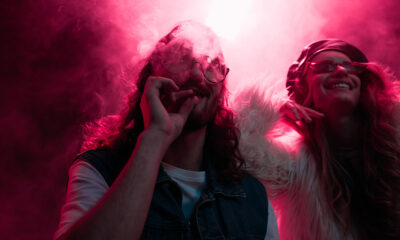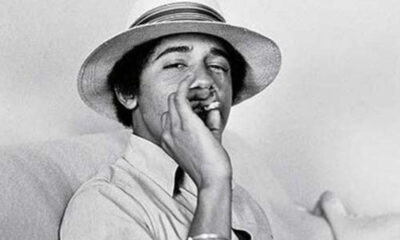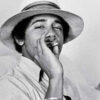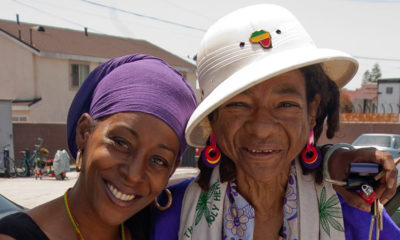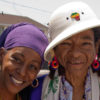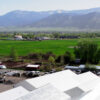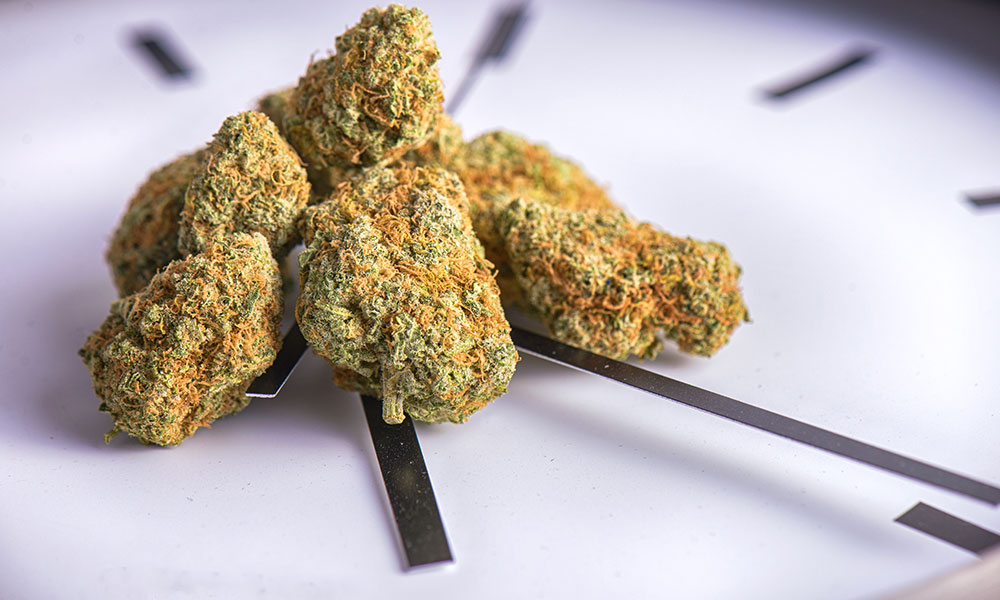
In History
The History of 420
Steve Hager was the first person to interview the Waldos, a group of high school friends who started the 4/20 tradition. Hager was instrumental in both documenting and creating the 4/20 holiday we celebrate today. Here, he explains the full history of 4/20 in three acts.
Act One
You can trace a line from Jack Kerouac and Neal Cassady to Ken Kesey and Ken Babbs to Steve and Dave, who entered San Rafael High School in the late ’60s. They were rugged individualists uninspired by the social scene, which centered on athletics and the school’s top jocks, so they decided to create their own fun by embarking on a quest for adventure. The first of these was a visit to a Bay Area research lab developing the very first holographs. Soon, Jeff, Larry and Mark joined the safaris, as these adventures became known.
Every safari started with a sacramental hit of cannabis, followed by the cranking of the tunes, either in the 1966 4-door Chevy Impala with the killer Craig 8-track stereo system, in Steve’s room, or in one of a few other sacred spots they shared herb, as getting high was illegal and couldn’t be done in public or around parents. One of their favorite spots was underneath the statue of Louis Pasteur by Benny Bufano, which overlooked the school parking lot. Sacred hymns provided by New Riders of the Purple Sage, Allman Brothers, Poco, Commander Cody, Beatles, and The Moonlighters were then employed to lift the vibration higher.
Waldos & Louie
This crew gravitated to a wall inside the courtyard of San Rafael High, where they’d meet before class and during lunch break to make withering comments about everything around them. This is where they obtained their name, The Waldos, and where they honed their savage wit. You couldn’t smoke pot around school unless it was a one-hitter and done extremely carefully, and even then, you risked suspension and your parents’ wrath.
In the fall of 1971, Steve was given a treasure map to an abandoned patch of cannabis on Point Reyes that had been planted by a member of the Coast Guard too scared to return. He wanted some fellow stoners to have the patch and everybody at San Rafael knew the Waldos were frequent stoners.
“Surely, this is the ultimate safari,” Steve thought. “No more adventurous nor noble quest could be devised by the mind of man.”
The Waldos prophetically all agreed to meet at 4:20 p.m. at the Louis Pasteur Statue to get high and drive out to Point Reyes to search for the secret patch of weed. From then on, whenever the Waldos passed each other in the halls, they spontaneously erupted in a salute with the words, “Four Twenty Louie!” Little did they know how far this ritual would eventually travel, although “Louie” got lost along the way.
For the next 10 years, the Waldos went on the most amazing safaris and had the most magical adventures, although they sadly never found that patch. But they always sponsored a big pot party on April 20th, where a ceremonial toke would take place at 4:20 p.m. Eventually they started getting married, having families and picking up the sacred pipe less frequently. However, they kept up the safaris.
But as soon as the Waldos retired from staging 420 ceremonies, the younger classmen of San Rafael picked up on the magic of numerology and began using the code as a way to evade detection. To honor the spirit of cannabis, some of them started a ritual of congregating on a ridge of Mount Tamalpais with a sunset view of the Pacific on April 20th in order to get high at exactly 4:20 p.m. This ritual started with only a few souls, but soon grew to dozens. And that’s when someone got the idea of making a flyer inviting stoners from all over the Bay Area to the ceremony. Nobody outside Marin even knew that 420 signified pot. But even those gathered at the top of Mt. Tam didn’t have any idea how the code had started. They thought it had something to do with the police.
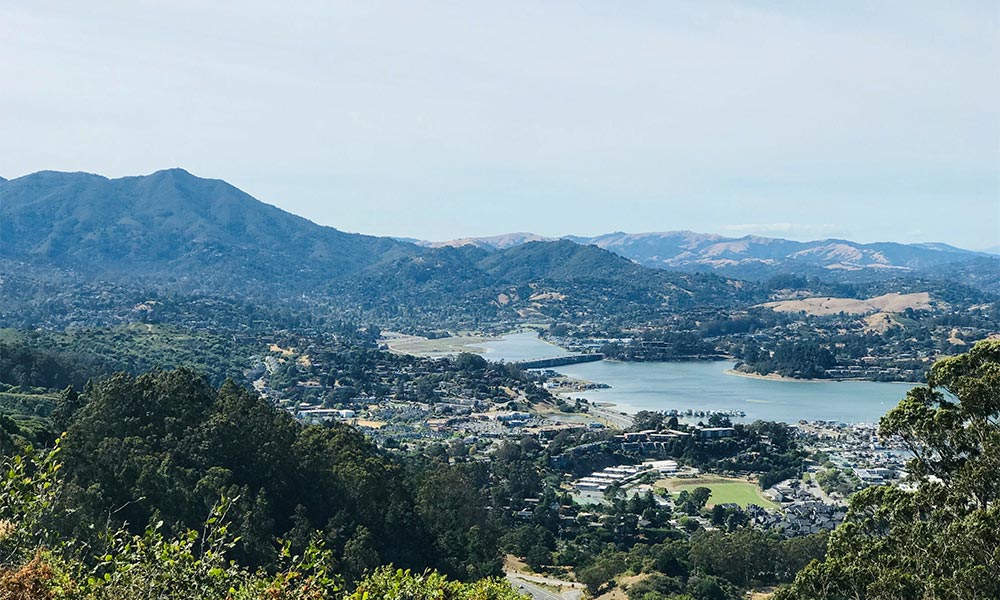
On a ridge of Mount Tamalpais, known locally as Mount Tam, is where some Marin County high schoolers first started the 4/20 ritual.
Act Two
I’m often knee-deep before I realize what I stepped into, and that’s how it was with the Cannabis Cup. The idea came to me on the plane, while flying back from the Netherlands after interviewing the founder of the first marijuana seed company, Nevil Shoemakers. The night before, Dave Watson had regaled me with tales of California harvest festivals before CAMP helicopters forced that scene underground.
Soon, I was back in the Netherlands, organizing the first Cannabis Cup, with a photographer and grow expert. Three seed companies entered, and one of them didn’t even cure their entries but plucked them fresh off the vine.
But when I returned home after that first event, I couldn’t shake a feeling of responsibility. My event demanded a ceremonial framework respecting the true spirit of cannabis and its historical importance and influence. And that’s how I ended up buying a paperback version of the “Rigveda.”
Imagine my surprise when I came across the description of the primary sacrament shared during all ceremonies, a drink called Soma:
“The blind see, the lame walk… he clothes the naked. Soma is a sage and seer inspired by poetry …King of the healing plants.”
I knew Soma was supposed to be a mushroom, something accepted as gospel by the academic community, but in my heart, I instantly realized this had to be a description of cannabis. I also realized there had to be some incredible cover-up going on that dwarfed the cover-up Jack Herer was pushing about the industrial uses and environmental benefits of hemp.
I stepped out of my office to smoke a joint and reflect on these matters (something I had been doing in my office, but had recently departed, as I had moved to a former warehouse in the back of the building), something necessitated by a crackdown on smoking. But the crackdown had just been extended to the warehouse as well, so I sought refuge in the stairwell.
Steve Bloom, the recently appointed news editor of High Times, was there, along with some hippie dude I didn’t know, and he proceeded to pull out a stash of whippets, and he began inhaling them in rapid succession. Bloom asked when he was going to share, and he said, “Sorry, I only have my dose and nothing more.”
I fired my joint, while Bloom showed me a flyer he’d been handed while attending a recent Grateful Dead show in Oakland. “Check this out,” he said. “It’s really silly.”
I don’t have immense satori moments often, but I’d been time traveling through the Vedas for hours and still had a foot in distant past, so when I saw that crude flyer asking people to come to the sunset-view ridge of Mt. Tam at 4:20 p.m. on April 20th, it assumed Biblical proportions in my mind. I expressed these feelings instantly, because this was a sign and something that could be employed to give meaning to my Cannabis Cup ceremony and also help make marijuana legal. But for those not into numerology or the study of secret societies, this is just silliness with no meaning. Some people “got” 420 and employed the magic to enhance their cannabis experience and help legitimize pot in ceremony, while for others, it remained a joke and nothing more.
I told Bloom I intended to use the code as part of my effort to build a case for spiritual rights to use cannabis under the Constitution.
“This ceremony manifested spontaneously, and is evidence of the power of cannabis to create ceremony and culture,” I said. “We’re going to make this a big part of the Cannabis Cup and the Freedom Fighters.”
Later on, I was crushed to discover Bloom had run a joke item about the flyer and failed to mention my pledge to deploy the code. No matter, I was soon on the road going to hundreds of college campuses in a debate titled Heads versus Feds against the former head of the DEA in New York. And at every event, I asked the students to have a peace ceremony at 4:20 on April 20th. I also told them to be moderate in the use at such a young age, reminding them “the less you do, the higher you get.”
Certainly, Chef RA, Jack Herer, Rodger Belknap, Thom Harris, Linda Noel and Debby Goldsberry “got” 420. They were the shock troops in the hemp legalization movement, who helped me found the Freedom Fighters, the first national hemp legalization group. For many years we drove to rallies in a psychedelic bus (a new one each year as they were always breaking down). We hosted free campgrounds, with free kitchens, and published a free newsletter. Back then, the rallies were all held at precisely high noon, a trend that would continue for well over a decade. But the Freedom Fighters always held council at 4:20 p.m., passed a feather and plotted how to best legalize in our lifetime. Just as every year, one of the Freedom Fighters was selected by open council to attend the Cannabis Cup as a celebrity judge.
Goldsberry became the most dedicated member of that original crew and quickly broke off to create her own organization, CAN. The half dozen rallies we attended were not enough to keep her occupied, as she created her own tour that hit almost every college town in the Midwest, while we concentrated on Ann Arbor, Madison, Boston and the Rainbow Family Gatherings. At every stop along the road, she handed out free copies of the original 420 flyer.
Kenny Scharf was the first famous artist to design the official Cup art.
I hadn’t been to any Cups since the first one. But in 1993, I held the first 420 council at a Cannabis Cup. In truth, it was a clumsy ceremony, as no one but me had any idea what 420 represented, including Jack Herer. Some people will claim 420 was already widespread within the Grateful Dead community in the 1980s, but that is not true. It was known to teenagers who lived in Marin County in the later part of the decade.
The following year, however, at the 7th Cup, my 420 ceremony blossomed and became epic and stayed that way for the next 15 years or so. Most of the chiefs of cannabis you’ll find in Amsterdam today attended that first big 420 ceremony and spoke from their hearts. Eagle Bill was a major force elevating those ceremonies and it could not have happened like it did without him. I ran into Bill on my way to open the Pax Party House on opening day and noticed he carried a hand-carved staff. I asked if he would like to be the ceremonial high priest and use his staff in place of a feather. The impact of this request on Eagle Bill was profound. To say Eagle Bill “got” 420 would be a vast understatement, as he rapidly elevated to become the primary guiding spirit of the event.
I was arranging everything around the afternoon 420, but the crew got so devoted they began doing 4:20 a.m. ceremonies, and these rapidly became the most legendary parties at the Cup and everyone collected photos of themselves under the clock at exactly 4:20.
In 1995, Vancouver got credit for staging the first April 20th 420 ceremony outside Marin County. Marc Emery, Dana Rozek, Cindy Lassu and Ian Hunter had a hand in manifesting this event, although Emery was initially opposed to the concept. It continues today as the longest-running April 20th ceremony in North America. A few years later, Goldsberry staged the first major 420 event in the Bay Area in Golden Gate Park, although it turned into a one-off. However, the already established free 420 gathering on hippie hill continues to this day. The Mt. Tam sunset ridge ceremony was shut down in 1990.
Act Three
Even though High Times became the magazine success story of the ’90s and the Freedom Fighters spearheaded the return of the rallies, re-igniting the sleeping marijuana movement, success only seemed to bring problems for me, as I was soon forced to disband the Freedom Fighters and there were constant pressures to shut down the Cup as well, or at least remove my supervision. I moved home to concentrate on events and how to document them for posterity as I felt there was something important in these 420 ceremonies I was manifesting. At the time, I was primarily interested in building up WHEE! as the premiere cannabis event in North America.
I’d been trying for years to get Ken Kesey and the Merry Pranksters over to the Cannabis Cup, and had lured Mountain Girl when she was poor and adventurous, but at one point realized if I wanted to do a ceremony with Kesey, it was going to have to happen in his backyard, and that’s what happened. The first year (1997), we had over 300 vendors and 20,000 attendees.
Of course the Pranksters “got” 420 immediately, and the reason the code suddenly began skyrocketing through the Grateful Dead scene was threefold: First, Rainbow Family and Dead Family were basically the same thing and the Freedom Fighters and 420 had acquired a huge presence at Rainbow; second, Jack Herer and Chef RA “got” 420 and they became influential figures and spread the code; and three, and probably most importantly, the Pranksters “got” 420, and began actively pushing it. And Kesey was the most influential person in the Dead scene after Jerry Garcia.
One day, I got an email from Mike, the travel agent of the Cannabis Cup, who had been made the producer of the event with me directing the ceremonies. He forwarded a message from Bloom in San Francisco who claimed to have started 420 with his friends in 1971. The part that caught my attention was Bloom wasn’t seeking money, he just wanted 420Tours.com to know the real story. He was writing to the Cannabis Cup travel package website because Mike had put up a forum for posting 420 Cannabis Cup stories, and this website drew the attention of the Waldos, who had been following the spread of 420 across America with much mirth and amazement.
By 2002, headshops in the Bay Area were stuffed with 420 t-shirts, buttons, hats, posters and various other memorabilia. The code has become a well-known secret inside cannabis culture and been written about in High Times and celebrated as the central ceremony in the Cannabis Cup and WHEE!, the two biggest and most influential cannabis-themed events at the time (if you don’t count Kumba Mela). Still, however, outside the Bay Area, the code remained an enigma, even to most stoners.
I ended up flying out to San Francisco and meeting the Waldos and holding epic ceremonies with them for days, all of which were captured on video, as were my 420 ceremonies with the Pranksters and the elders of the Rainbow Family. In fact, whenever I get together with Pranksters, Waldos or Rainbow Elders, the same magic improvisational energy always emerges, as well as an overwhelming desire to have fun. I never doubted the Waldos’ story, and read the truth in their hearts before I examined their documents. But the powers-that-be at High Times never trusted me, and the publisher spread the story I was suppressing competing tales on the origins of 420 because the Waldos were my friends, implying it all a massive hoodwink on my part. And that’s the way this story appears on Wikipedia today.
Heads versus Feds
I also began a college lecture tour in 1995, debating Curtis Sliwa for five years, and then the former head of the New York DEA for additional 14, and Heads versus Feds traveled to over 300 colleges and universities over 19 years and I end each debate with a plea for the creation of a local student-run legalization group and urge the students to hold annual events on April 20yh and have local bands play to raise money for the chapter. That line about April 20th often gets a laugh from the audience, and about half the time, I’m able to get volunteers to start a sign-up sheet for a chapter of NORML for the first five years before I switched to advocating for SSDP. At many debates, the list of prospective members reaches several dozen before I depart the lecture hall, and some of these chapters actually get off the ground. Enough for SSDP to follow the tour remotely as it moves around the country, and that’s probably why Allen St. Pierre of NORML said recently: “Without Hager, I don’t think there’s any way that this interesting numerology that has crept deep into American culture and commerce would have happened.”
One of the earliest schools we traveled to for the Heads versus Feds debate was Boulder, Colorado, and that school soon started a 4/0 ceremony that got so big the University had to shut down the entire school on April 20th just to try and stop it. And I think that’s one reason why Denver got the center of energy of 420. Colorado was always the most vocally pro-pot state I visited.
420 as a Ritual
I’ve long supported the view 420 should be used to help ritualize and legitimize cannabis as a sacrament, which will also strengthen the case for religious use. I’m not in favor of students doing breakfast dabs and going off to take their calculus exam. I realize some get attracted to intoxication too early in life, and it holds them back, but on the other hand, I don’t believe anyone should go to jail, lose a student loan, or lose child custody over cannabis. So I suggest using 4:20 p.m. as a guide for an appropriate hour for the adult population to hold a cannabis ceremony, although this certainly doesn’t apply to those with a medical need. If you’re having a medical emergency, dabs away.
I’m hoping some who read this will “get” 420, and consider lifting the ceremony to a higher level, something more meaningful than just an excuse to get intoxicated. Only then will we be able to help forge a spiritual culture worthy of being handed down to future generations. If you want to treat this plant with respect, there is magic, but for some others who use it without wisdom or who become too attached too soon, it’s just an expensive habit. The other thing I’ve learned is that if you want to have a true counterculture ceremony, everyone must be invited, which means it has to be free and it can’t just be about getting high and nothing else.
This article was initially published in 2018 with permission of the author.





